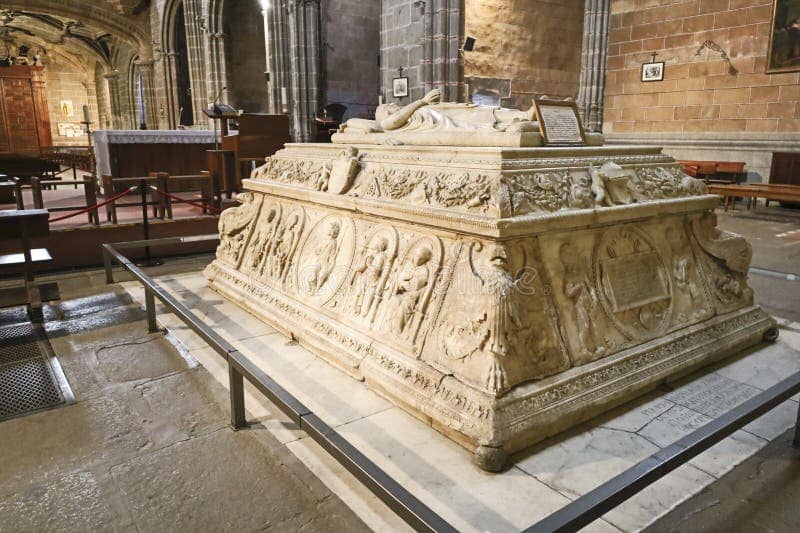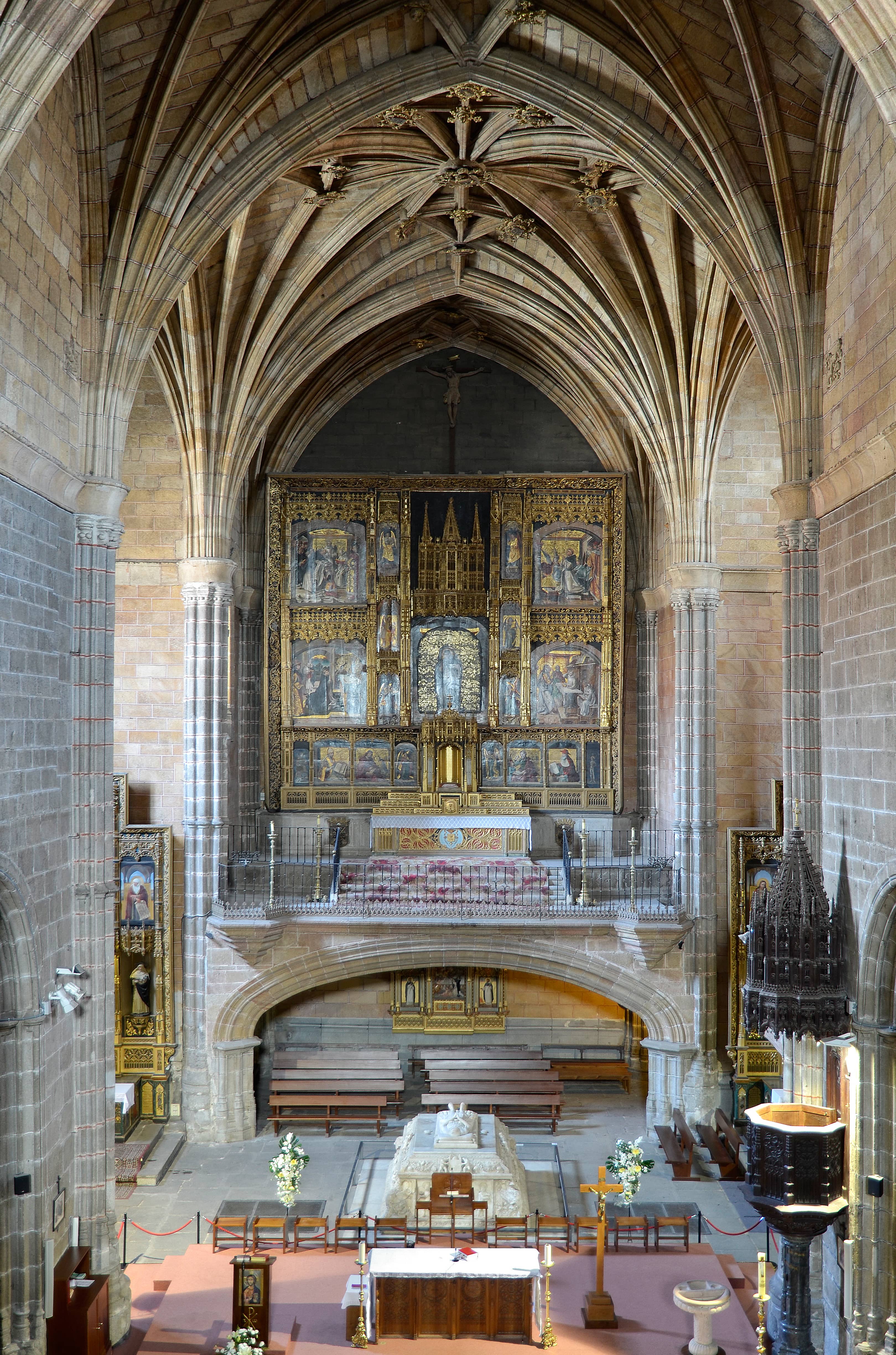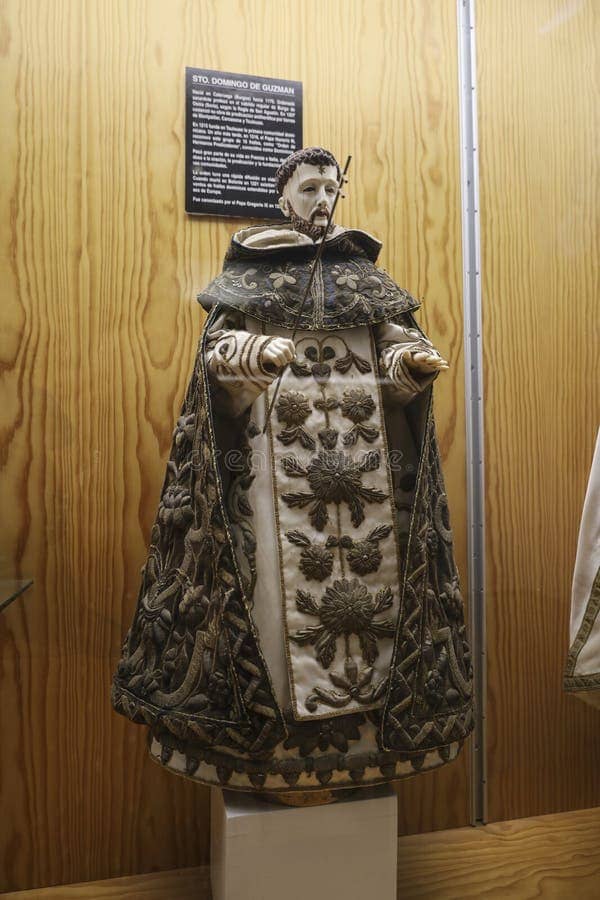Royal Monastery of Santo Tomás
A stunning Gothic monastery with beautiful cloisters, a royal tomb, and unique Oriental Art & Natural Science museums.

Highlights
Must-see attractions

Social
From TikTok & Reddit
Best Time
Fewer crowds, peaceful exploration
Royal Monastery of Santo Tomás
Best Time
Fewer crowds, peaceful exploration

Highlights
Must-see attractions
A stunning Gothic monastery with beautiful cloisters, a royal tomb, and unique Oriental Art & Natural Science museums.
"A pleasantly surprising experience with magnificent architecture and intriguing collections."
Audio Guide Tips
The audio guide is included, but can be confusing. Pay attention to signage or ask staff for directions. :iphone:
Wear Comfortable Shoes
You'll be doing a lot of walking to explore the cloisters and museums. :athletic_shoe:
Highlights
Discover the most iconic attractions and experiences

Gothic Church
Main Worship Space
Admire the stunning Gothic architecture and the beautiful tomb of Prince John of Asturias.

Cloisters
Central Courtyards
Explore the serene cloisters, a key feature of the monastery's magnificent architecture.

Oriental Art Museum
Dedicated Exhibition Hall
Discover a fascinating collection of artifacts gathered by Dominican missionaries from the Far East.

Natural Science Museum
Exhibition Hall
An unexpected but intriguing museum showcasing a collection of natural history specimens.
Plans like a pro.
Thinks like you
Planning Your Visit
Timing Your Visit
Navigating the Monastery
Best Times
Insider Tips
from TikTok, Instagram & Reddit
Audio Guide Tips
The audio guide is included, but can be confusing. Pay attention to signage or ask staff for directions. :iphone:
Wear Comfortable Shoes
You'll be doing a lot of walking to explore the cloisters and museums. :athletic_shoe:
Combine with City Walls
Visit after exploring Ávila's famous walls for a full day of history. :world_map:
Don't Skip the Museums
The Oriental Art and Natural Science museums are surprisingly engaging. :museum:
Tips
from all over the internet
Audio Guide Tips
The audio guide is included, but can be confusing. Pay attention to signage or ask staff for directions. :iphone:
Wear Comfortable Shoes
You'll be doing a lot of walking to explore the cloisters and museums. :athletic_shoe:
Combine with City Walls
Visit after exploring Ávila's famous walls for a full day of history. :world_map:
Don't Skip the Museums
The Oriental Art and Natural Science museums are surprisingly engaging. :museum:
What Travellers Say
Reviews Summary
Visitors praise the Royal Monastery of Santo Tomás for its magnificent Gothic architecture, serene cloisters, and surprisingly engaging museums, particularly the Oriental Art collection. While the audio guide can be a bit confusing at times, the affordable entrance fee and the historical significance, including Prince John's tomb, make it a highly recommended and pleasant surprise for many.
"Brilliant very early monastery with museum of natural history ( odd) and wonderful collection of material from far east."
Michael McGinnes
"The experience of the museum was incredible of historical significance however the audio guides were a bit confusing at times. Better signage and closer together with directions would have made following the tour better."
John M. Kalinowski
"It was founded in 1482 as a Gothic-style Dominican monastery in honor of Thomas Aquinas. Prince John of Asturias is buried there. In addition to the worship space, there is also an Oriental Art Museum and a Natural Science Museum. The entrance fee is 4 euros."
Seokjin Ham
What People Like
What People Dislike
Frequently Asked Questions
🚇 🗺️ Getting There
The Royal Monastery of Santo Tomás is a bit of a walk from Ávila's walled city, but it's absolutely worth it if you're interested in history and architecture. Many visitors enjoy the stroll, which takes about 15-20 minutes. You can also consider a short taxi ride if you prefer.
Yes, there is usually parking available near the monastery, making it accessible for those arriving by car. It's advisable to check local parking regulations upon arrival.
While specific bus routes might vary, it's generally accessible within Ávila. Checking local transport schedules upon arrival is recommended for the most up-to-date information.
🎫 🎫 Tickets & Entry
The entrance fee is quite affordable, typically around 4 euros. This fee often includes access to the monastery, church, cloisters, and the museums.
While not always strictly necessary, booking tickets in advance is recommended, especially during peak tourist seasons, to avoid potential queues and ensure a smooth entry. :ticket:
Opening hours can vary seasonally. It's best to check the official website or contact the monastery directly for the most current information on visiting times before your trip.
Yes, the audio guide is typically included with the entrance fee and is a valuable tool for understanding the history and significance of the site. :iphone:
Information on discounts for students, seniors, or groups is usually available on their official website or can be inquired about at the ticket counter. It's always worth asking!
🎫 🏛️ Onsite Experience
You can explore the magnificent Gothic church, Prince John's tomb, three cloisters, a former royal palace, a former university, an Oriental Art Museum, and a Natural Science Museum.
Some visitors find the audio guide's directions a bit confusing. It's helpful to look for clearer signage or ask staff for assistance if you get lost.
A typical visit can take anywhere from 1.5 to 3 hours, depending on how much time you spend in the museums and cloisters. Allow ample time to fully appreciate the site.
While the main areas are generally accessible, some older parts of the monastery might present challenges. It's advisable to contact the monastery in advance to inquire about specific accessibility features.
Photography is generally permitted in most areas for personal use, but it's always a good idea to check for any specific restrictions, especially within the church or museum exhibits. :camerawithflash:
🍽️ 🍽️ Food & Dining
There are typically no dining facilities directly within the monastery itself. However, you'll find numerous restaurants and cafes in the nearby city of Ávila offering local specialties.
Don't miss trying the 'chuletón' (a thick-cut steak) and other traditional Castilian dishes when dining in Ávila.
📸 📸 Photography
The cloisters offer beautiful architectural shots, especially with the play of light and shadow. The Gothic church interior and Prince John's tomb are also highly photogenic. :camerawithflash:
Drone usage is typically prohibited at historical and religious sites to preserve their integrity and for safety reasons. Always check local regulations before flying a drone.
For Different Travelers
Tailored advice for your travel style
👨👩👧 Families with Kids
Consider making it a shorter visit if attention spans are limited, focusing on the most visually engaging parts like the cloisters and the Prince's tomb. Bringing snacks and water is advisable, as on-site dining options are limited. The walk from the city walls is manageable for most families, offering a chance to see more of Ávila.
🏛️ History Buffs
Don't overlook the Oriental Art Museum; it's a testament to the global reach of religious orders and offers a unique perspective on historical cultural exchanges. The Natural Science Museum, though unexpected, adds another layer to the historical narrative, showcasing the intellectual pursuits of the era. The detailed audio guide, despite its occasional quirks, is an invaluable resource for in-depth understanding.
🚶 Solo Travelers
Engage with the museum collections at your own leisure, taking the time to absorb the details of the Oriental Art and Natural Science exhibits. The friendly staff are often happy to offer insights or clarify any confusion with the audio guide, making for a welcoming experience.
Deep Dives
In-depth insights and expert knowledge
A Glimpse into History
Beyond its religious and royal connections, the monastery also served as a former university and royal palace, showcasing its multifaceted role in history. The complex is organized around several magnificent cloisters, providing a sense of grandeur and tranquility. The inclusion of museums dedicated to Oriental Art and Natural Sciences adds unique layers to the visitor experience, reflecting the diverse interests and reach of the Dominican order.
The Unique Museums
Equally intriguing is the Natural Science Museum. While seemingly an odd pairing with a monastery, it presents a collection of natural history specimens that adds an unexpected educational dimension to the visit. Visitors often remark on the eclectic nature of these collections, making the monastery a place of diverse historical and scientific interest.
Architectural Marvels
The monastery is structured around three magnificent cloisters. These open courtyards, often featuring arcades and gardens, provide a peaceful retreat and showcase the harmonious design of monastic life. Walking through these spaces allows visitors to appreciate the scale and beauty of the complex, offering numerous opportunities for reflection and photography.
Social
from TikTok, Instagram & Reddit